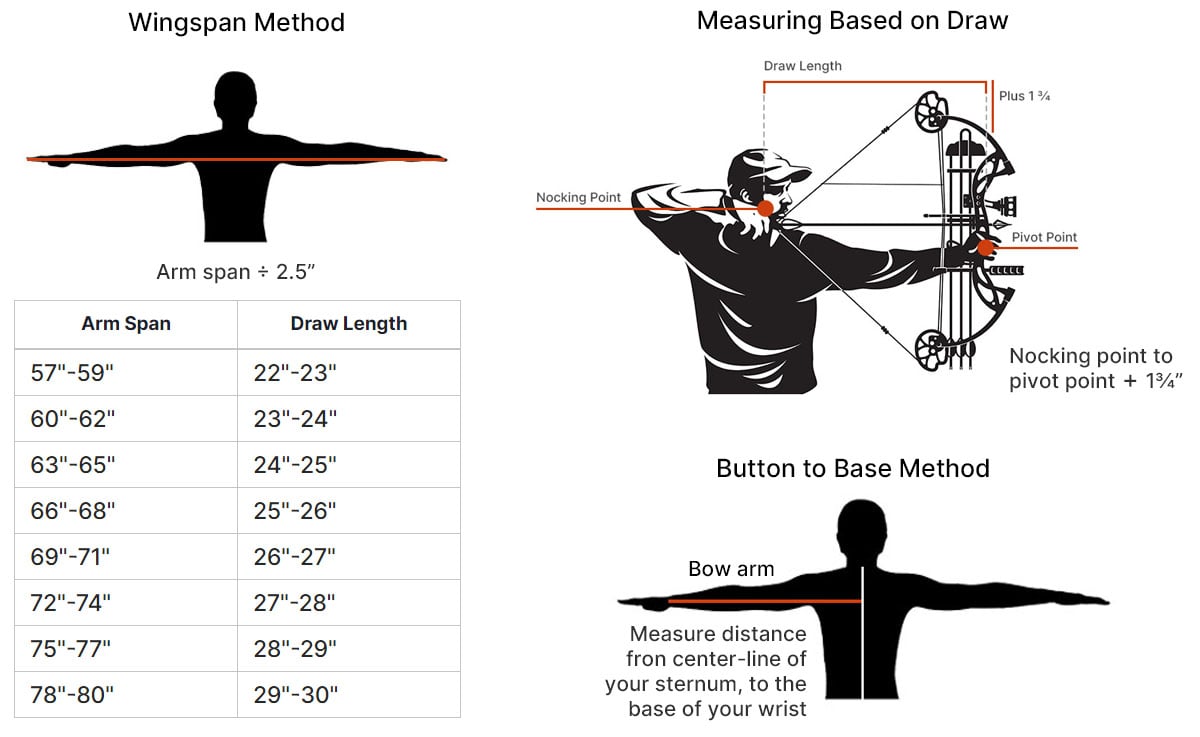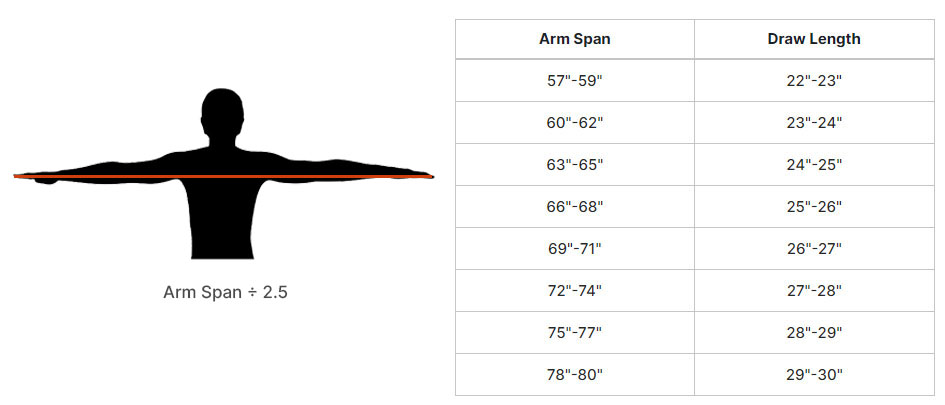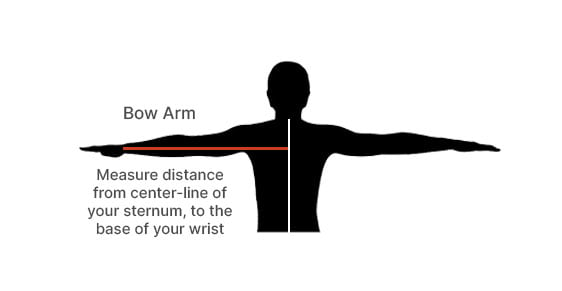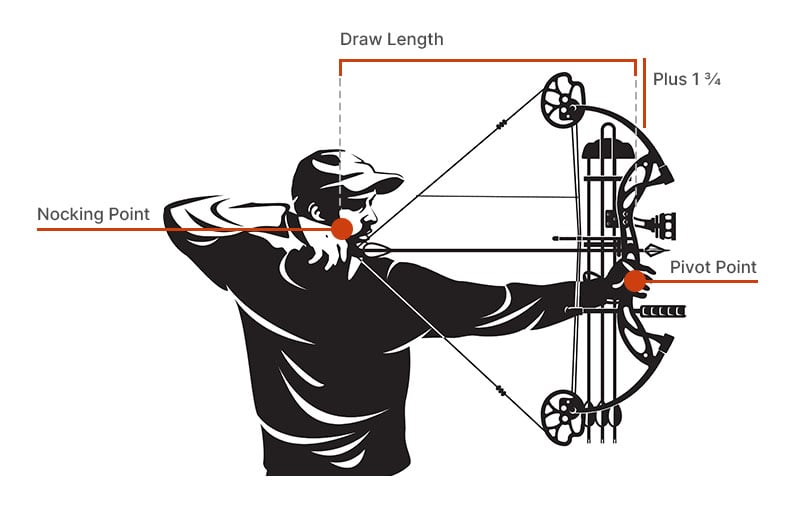Bow Draw Length Charts
for Measuring Draw Length

Having the proper bow draw length is essential for maintaining accuracy. There are three methods for measuring draw length. These include the Wingspan method (Archery Trade Association method), Buttons to Base method, and Measuring Based on Draw. Of these three methods, Measuring Based on Draw is usually the most accurate.
The Wingspan Method

To measure your draw length, stand upright with your back against a well, and stretch your arms out to the side. Measure the distance between the tips of your middle fingers. Then, divide the measurement by 2.5. This is the most popular method for determining draw length. A variation of this method is the (Wingspan-15)/2. Instead of dividing the wingspan by 2.5, subtracts 15 from the wingspan measurement and then divide by two. Both methods will produce a very similar measurement.
Button to Base Method

Again, stand upright with your back against a wall. Extend one arm out to the side so it is parallel to the ground. To determine draw length, simply measure from the center of the chest to the spot on the wrist where you'd button up a dress shirt (end of the wrist below the palm.) This method is a simple but somewhat less accurate method of determining draw length.
Measuring Based on Draw

Draw length is determined by measuring the distance from the nocking point on the string to the pivot point of the bow grip plus 1 3/4 inches. Measurement can be made using a tape measure or a special measuring arrow that can be found at an archery pro-shop
Why is determining draw length important?
The biggest factor that influences accuracy when using a compound bow is proper form. To maintain proper form and consistent accuracy requires having your bow set to the correct draw length. When a bow’s draw length is set incorrectly, accuracy is negatively impacted. Bow draw length is unique to each archer.
To maintain consistent accuracy, an archer’s arms should be at a 90-degree angle to the body at full draw. This can only be achieved when the bow’s draw length is correctly adjusted to the size and arm span of the archer.
When draw length is set incorrectly, two scenarios can occur: underdraw or overdraw. When a bow’s draw length is too short for the archer, an underdraw occurs. In an under-draw scenario, the bow will cam over and reach its backstop before reaching the archer’s point of anchor. In turn, this will cause the archer to lose the ideal “T” formation, the shoulders will draw forward, and the archer will be hunched over when the arrow is released.
If a bow’s draw length is set too high for a particular archer, an overdraw scenario occurs. The overdraw is the opposite of an underdraw. In this scenario the bow does not reach its backstop before an archer reaches full draw and can no longer anchor the string alongside the face as required for proper release.
Both under-draw and overdraw scenarios cause improper form and posture resulting in inconsistent accuracy. Improper form can also lead to archer injury. Determining proper bow length is an essential element of archery.